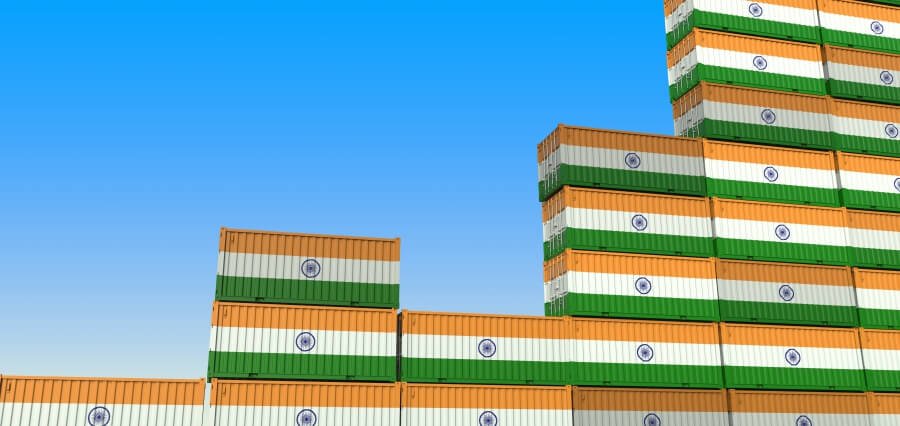#Nation Builders
The manufacturing sector is an important foundation of India’s economy, contributing significantly to its GDP, employment, and overall development. Over the past few decades, the sector has evolved into a dynamic and integral part of the nation’s industrial landscape. From traditional industries like textiles and steel to more modern sectors like automotive, electronics, and pharmaceuticals, manufacturing in India is expanding rapidly. With government initiatives like “Make in India” and technological advancements driving growth, the manufacturing industry plays a crucial role in shaping India’s economic future. This article explores how the manufacturing sector is contributing to the Indian economy and its potential for further growth.
- Contribution to GDP
This industry segment is one of the primary drivers of India’s gross domestic product (GDP). As of 2023, manufacturing accounted for approximately 17% of India’s GDP, and the government has set ambitious targets to increase this share to 25% by 2025 under the “Make in India” initiative. The sector’s diverse industries, ranging from traditional areas like textiles and food processing to high-tech sectors like electronics and automotive, provide a significant portion of the country’s economic output.
Manufacturing industry’s contribution to GDP is not just limited to the production of goods but also through its multiplier effect on other sectors. For instance, industries like logistics, retail, and services are closely linked to manufacturing, creating a ripple effect that benefits the broader economy. The expansion of the manufacturing sector, particularly in areas like consumer goods and electronics, also boosts domestic consumption, further fuelling economic growth.
- Employment Generation
It is one of the largest employers in India, providing jobs to millions of people across various skill levels. It plays a vital role in absorbing the labor force, especially in rural areas, where traditional industries like textiles and food processing offer employment opportunities. As India continues to urbanize, the growth of modern industries like electronics and automotive has also led to an increase in job creation in urban areas.
Employment in manufacturing is critical for addressing India’s demographic challenges, particularly with the country having one of the world’s youngest populations. The sector provides opportunities for both unskilled and skilled labor, including engineers, technicians, and assembly line workers. Additionally, the rise of automation and technology integration in manufacturing is opening new avenues for specialized jobs in areas like robotics, data analytics, and process optimization.
- Exports and Foreign Exchange Earnings
The manufacturing companies are a major contributor to the country’s export earnings. Key industries such as textiles, pharmaceuticals, automotive, and chemicals are significant players in the global market. The automotive industry, in particular, has positioned India as a hub for small car manufacturing, with exports reaching markets across Asia, Africa, and Europe. Similarly, India is one of the world’s largest producers and exporters of generic pharmaceuticals, supplying affordable medicines to countries around the globe.
These exports are crucial for earning foreign exchange and improving India’s balance of trade. With a competitive labor market and growing technological capabilities, Indian manufacturers are increasingly able to compete on quality and cost in international markets. The government’s policies, including export incentives and special economic zones (SEZs), have further strengthened the country’s export capabilities.
- Infrastructure Development
It’s growth has a direct impact on infrastructure development in India. Manufacturing requires robust transportation networks, reliable power supply, and efficient logistics systems, which, in turn, spur investments in roads, railways, ports, and energy infrastructure. The development of industrial corridors, such as the Delhi-Mumbai Industrial Corridor (DMIC), has attracted both domestic and foreign investment in infrastructure, driving economic growth in these regions.
Infrastructure development not only benefits manufacturing but also enhances connectivity and access to markets for other industries. The creation of industrial parks, SEZs, and smart cities is also transforming India’s urban landscape, providing modern facilities that cater to the needs of global manufacturers. These infrastructure improvements further strengthen India’s position as a manufacturing hub.
- Technological Advancements and Innovation
In recent years, the Indian manufacturing sector has seen significant technological advancements, particularly with the adoption of Industry 4.0 technologies like automation, artificial intelligence (AI), and the Internet of Things (IoT). These technologies are improving efficiency, reducing production costs, and enhancing product quality. Indian manufacturers are increasingly investing in research and development (R&D) to innovate and develop new products that cater to both domestic and international markets.
The rise of digitalization and smart manufacturing has also fostered collaboration between industries and startups, driving innovation in areas such as robotics, 3D printing, and data analytics. These innovations not only make Indian manufacturing more competitive but also open new avenues for growth in sectors like healthcare, renewable energy, and electric vehicles.
- Government Initiatives
The Indian government’s role in promoting the manufacturing sector cannot be overstated. Initiatives like “Make in India” have been instrumental in attracting both domestic and foreign investment in manufacturing. By offering incentives such as tax breaks, simplified regulations, and infrastructure support, the government aims to transform India into a global manufacturing hub.
In addition to “Make in India,” programs like the Production-Linked Incentive (PLI) scheme have targeted specific sectors such as electronics, automotive, and pharmaceuticals to boost domestic production and exports. The PLI scheme provides financial incentives for companies to increase output and scale their operations, helping India compete on a global stage.
The manufacturing industry is a crucial engine of economic growth for India, contributing to GDP, employment, exports, and infrastructure development. With strong government support and increasing technological advancements, the sector is well-positioned to drive India’s economic progress in the coming years. As India continues to integrate into global supply chains and leverage its competitive advantages, the manufacturing sector will play an even more prominent role in shaping the country’s economic future. By overcoming challenges such as infrastructure gaps and skill shortages, India can unlock the full potential of its manufacturing industry and further establish itself as a global manufacturing powerhouse.








